Wax ivy is an evergreen creeper common in the wild in India and China. To date, more than 300 varieties of plants suitable for indoor floriculture have been bred.
Material Content:
Species and varieties
Hoya wax ivy has been grown indoors for quite some time. Among the plant varieties are such popular varieties as Exotica, Krimzon Queen.
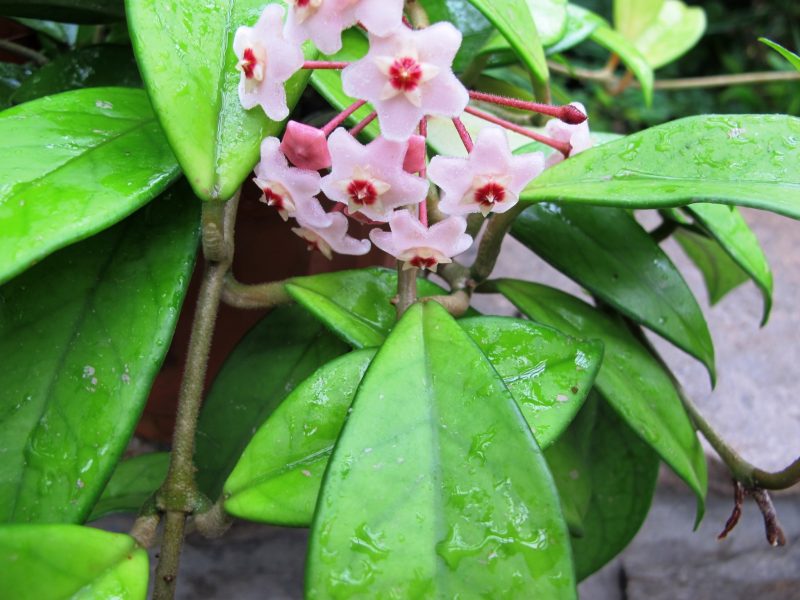
Varieties with small and heavily twisted leaves, decorated with a weak ornament, were bred.
Hoya the Beautiful is more likely a bush that branches very strongly. But usually the shoots hang, and the plant is used as an ampel. The leaves of the species are small, an umbrella inflorescence contains up to 9 pure white flowers. Pleases with flowers throughout the year.
Hoya Mnogotsvetkovaya is a liana, which necessarily needs support. Foliage of the species is quite large - up to 10 cm, in inflorescence up to 30 flowers. It smells like a lemon.
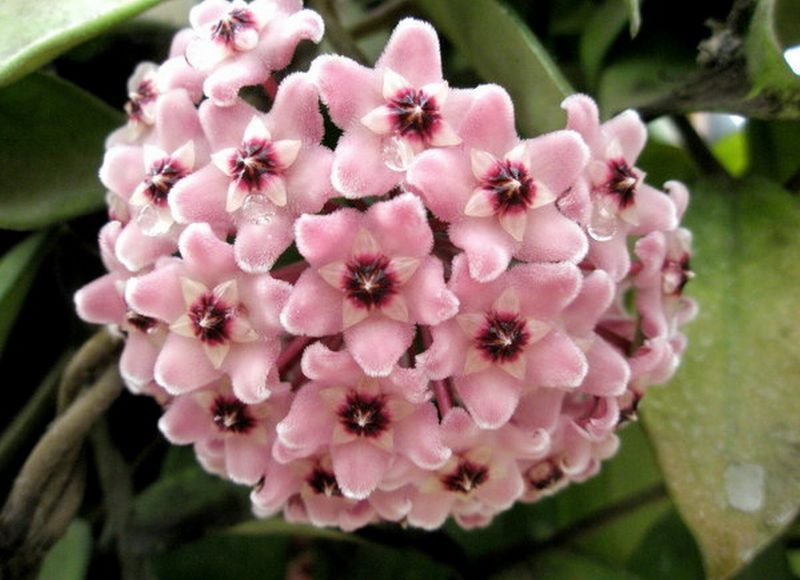
A winding vine with red flowers is Hoya Regal. The flowers exude a sweet aroma. In nature, the plant is distributed on the peninsula of Borneo.
All varieties and types of wax ivy cannot be described. The plant is very decorative, and with proper care will delight with lush foliage and beautiful flowers.
Basic growing requirements
Hoya is a photophilous plant. At room conditions, you can wait for flowering only by placing a flowerpot on the south window. But at the same time, on too hot days, the flower must be shaded from direct sunlight, otherwise burns will appear on the leaves.The more light a flower reaches, the faster the buds will appear. When the first buds appear, the pot should never be moved.
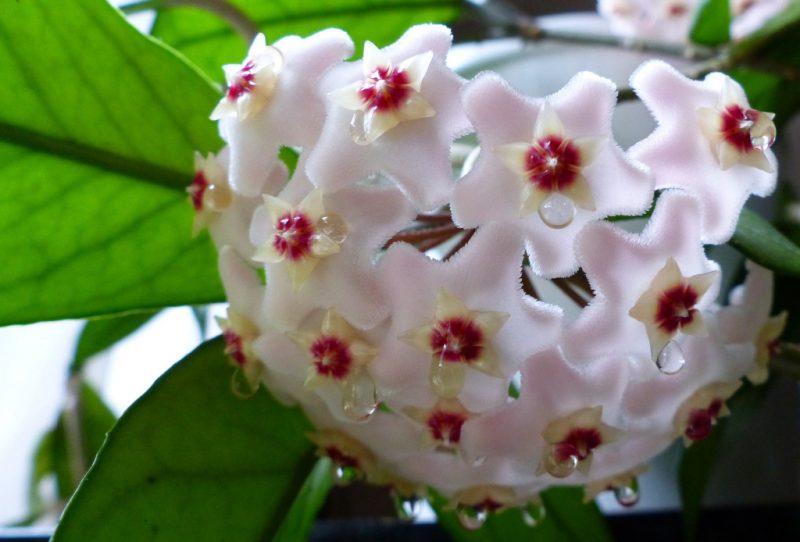
Wax ivy does not like wind and drafts, and also hard tolerates temperature extremes and strong cooling. At +10, the plant will die.
As for soil requirements, ivy loves loose and fertile soil, with good drainage.
Some varieties have special requirements for soil acidity and temperature conditions. Some species cannot grow even at temperatures below +20.
Wax ivy care at home
Caring for the plant can not be called complicated, but still some rules will have to be respected, otherwise Hoya will die or not bloom.
A flower of wax ivy needs support, to which vines should be tied, unless the plant grows like an ampelous. It can be arches, ladders, a taut rope.
Features of the content depending on the season
In winter, the flower needs peace - it will be comfortable on the south side at a temperature of about + 15-17. In winter, watering is reduced, but make sure that the land in the pot does not dry out much.
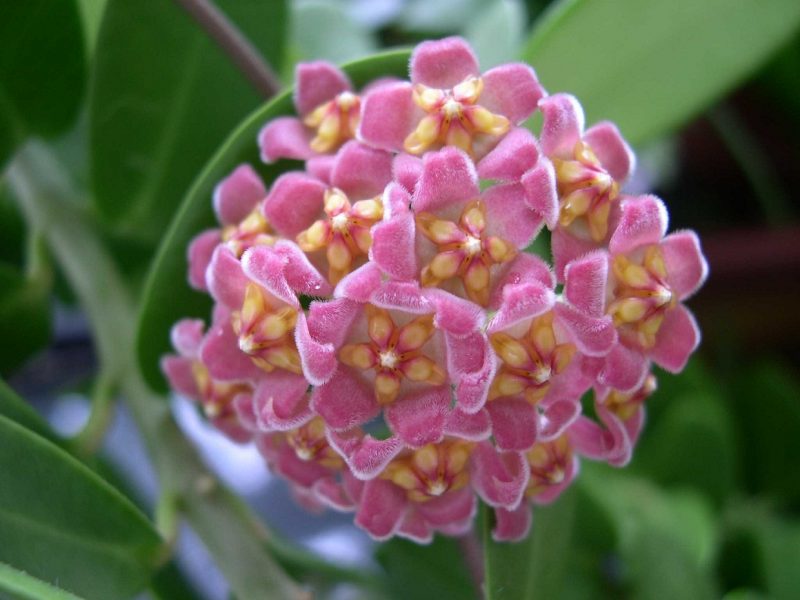
With the advent of spring, the plants begin to be watered more abundantly and bathe once a week under a warm shower.
With the beginning of summer, the flower can be rearranged in fresh air, but this is not necessary. Wax ivy loves the air, and therefore, in the warmer months, the room needs to be ventilated often, but make sure that there are no drafts. Also in the summer period it is necessary to spray ivy more often so that its foliage looks fresh and does not rub its decorativeness due to warm and dry air.

As soon as it begins to cool in the fall, the flower is taken into the house, put on the south window, and the spraying is stopped. In the autumn period, it is enough to wipe the leaves with a damp cloth once a week.
Flowering wax ivy can be achieved in the winter. For this, preparations begin in September. The flowerpot is rearranged in a warm place and watering is sharply reduced. The eastern window sill is quite suitable. In December and January, the plant is not watered at all, since dry soil will stimulate flowering. The optimum temperature is about +15. So you can make the flower throw buds.
Watering Wax Ivy
Ivy is an indoor plant that loves water, but at the same time is afraid of its excess. In summer, the flower is watered abundantly, but be sure to drain excess water from the pan.
In the fall, watering starts to be reduced, as the plant prepares for a dormant period. In winter, watered very poorly and practically do not spray the flower. With the advent of spring, they begin to water more abundantly and spend the first bathing in the shower.
Soil Composition and Pot Selection
At home, wax ivy is grown in small flowerpots. The flower does not like too voluminous capacities. It is necessary to give preference to flowerpots of a small volume of natural material, for example, clay.
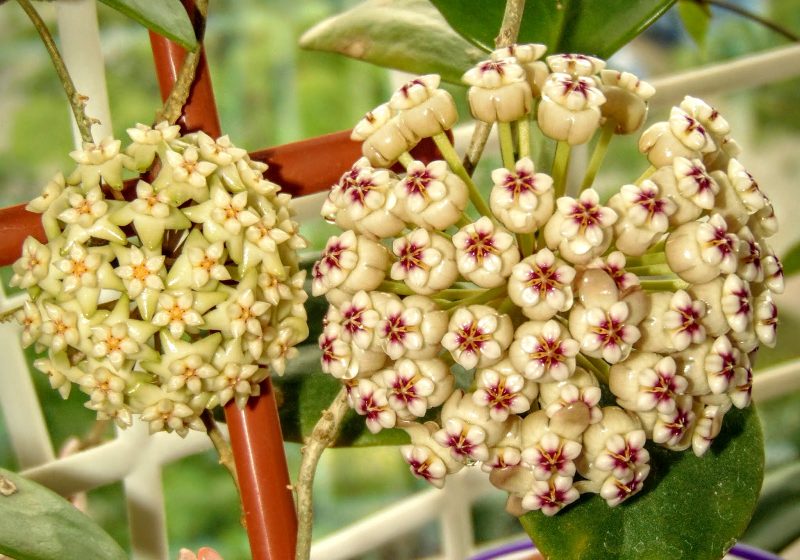
As for the soil, Hoya loves the ground, well permeable by air and water.
You can prepare the soil mixture from:
- peat;
- perlite;
- coconut fiber;
- tree bark;
- a small part of the humus.
Most varieties of indoor ivy prefer neutral or slightly acidic soil.
Read also:Scheffler: home care
Fertilizer application
The fact that the flower should initially be planted in fertile soil is in itself a guarantee of its proper development and flowering. But a year after planting, ivy begins to experience a lack of nutrients. This plant mainly needs nitrogen, potassium and phosphorus. The lack of these elements is fraught with stunted growth and changes in the appearance of foliage.
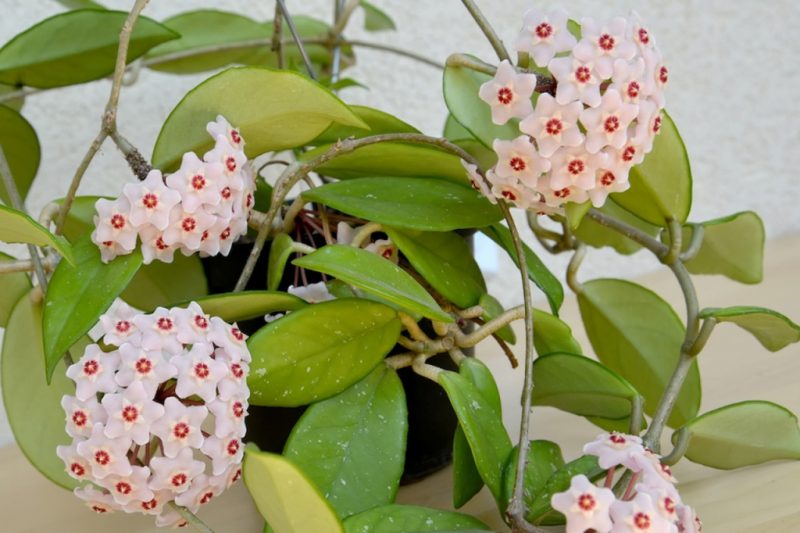
In spring and summer, the flower should be fed once every two weeks, making a complex mineral fertilizer for flowering during irrigation. It should be noted that the ratio in the feeding of potassium, phosphorus and nitrogen should be equal.
With the onset of cold weather, top dressing is not introduced.
Landing and transplanting
Wax ivy really does not like frequent transplants.They transplant it only when necessary, when the roots already have too little space in the flowerpot. It is enough to carry out a transplant once every three years.
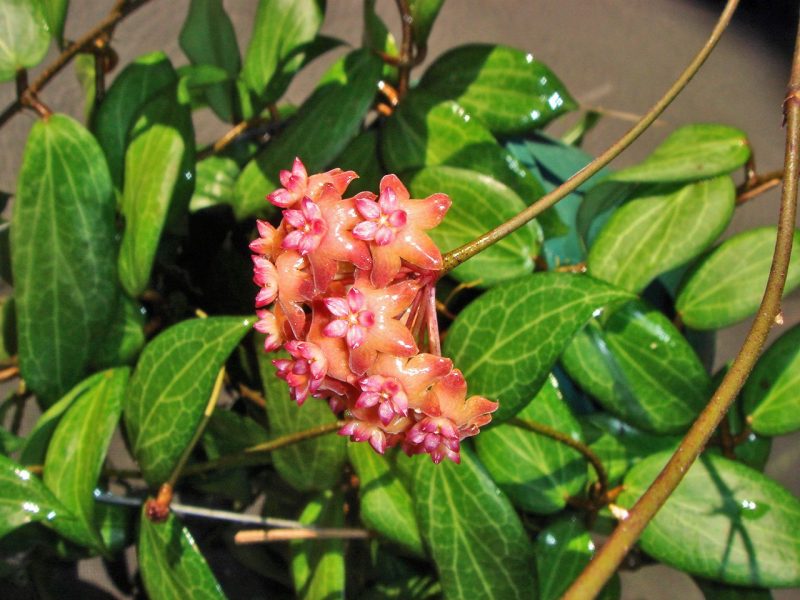
The plant quickly gives air roots, so there are no problems with its planting or transplanting. It is enough to pin a long shoot to the ground, and it will soon give roots. When the roots appear, the young plant is separated from the mother.
It is very important that when transplanting ivy the new flowerpot is not much larger than the old. If this recommendation is not followed, then Hoya may stop blooming.
Drainage is mandatory at the bottom of the pot so that there is no water near the roots.
Propagation Features
Ivy at home is easiest to propagate by layering or cuttings.
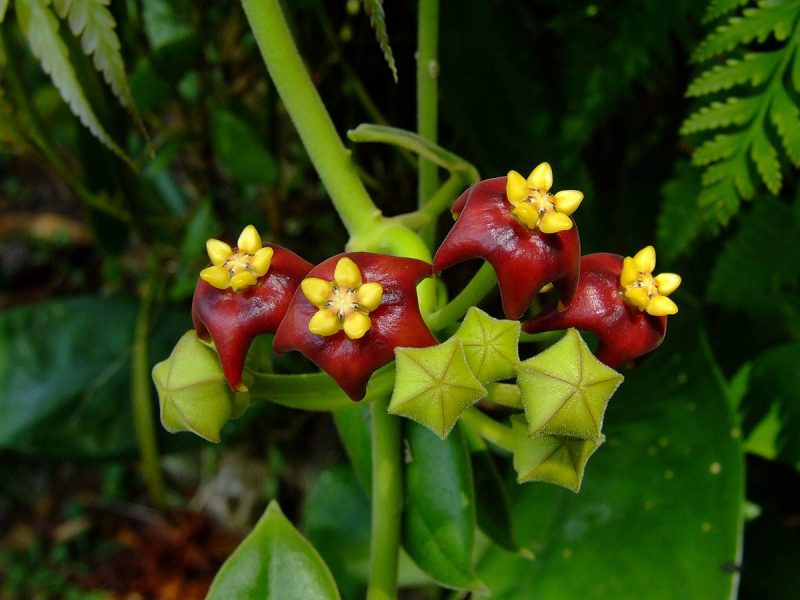
Propagation by seeds is rarely used, it is easiest to propagate a flower by cuttings. Long shoots are cut into cuttings and placed in water. It is desirable that each branch has at least a pair of leaves. Rooted cuttings in a wet mixture of peat and sand at a temperature of +20. The room should be very humid.
Already in the year of planting, you can get a flowering plant, if you propagate Hoya with a stem layering. To do this is very simple: a small incision is made on the shoot and it is pinned to the ground. Above, the shoot is covered with wet moss. After some time, the escape can be cut off.
Plant diseases and pests
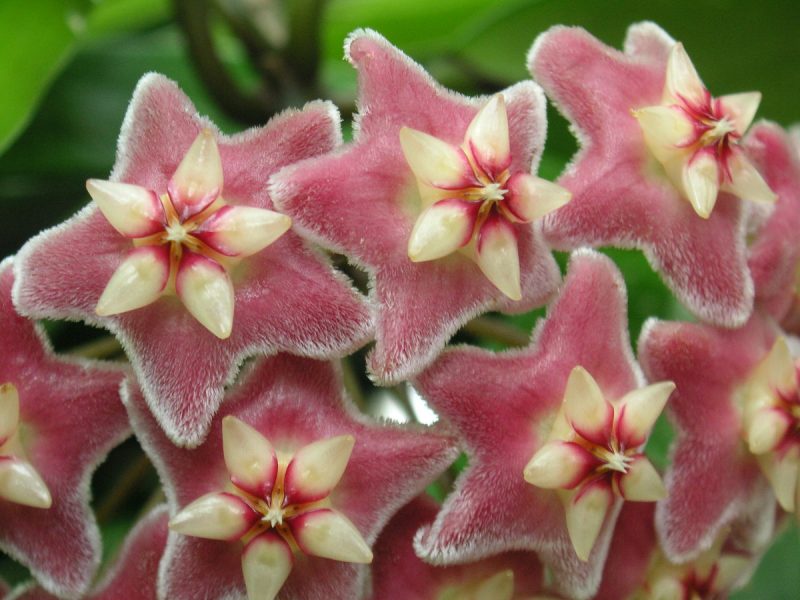
This plant is practically not sick and is not attacked by pests. But sometimes a spider mite may appear on the flower. If insects are noticed, the flower should be sprayed with a solution of an insecticide, for example, Actellic.
Why Hoya does not bloom, leaves turn yellow
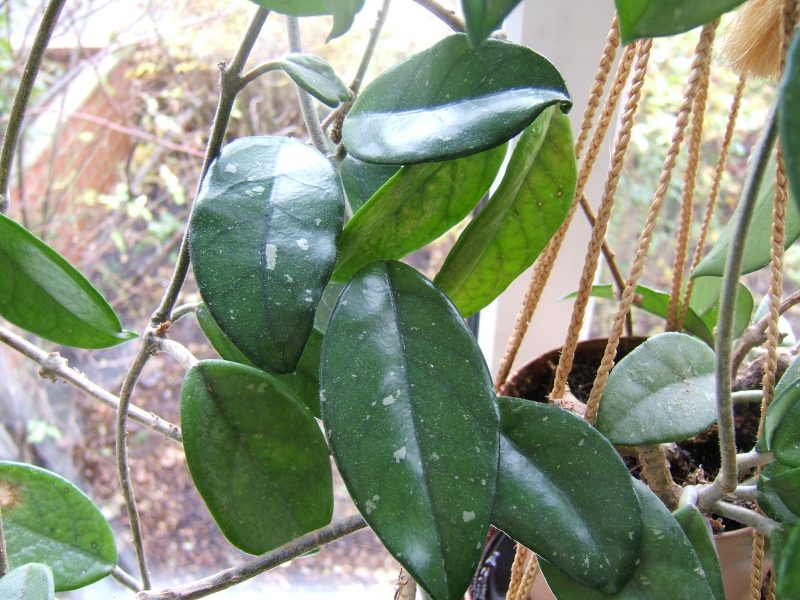
Basically, florists themselves are to blame for all the problems. Most often, the plants turn yellow and fall leaves, it stops flowering. Why?
- The blame may be the cold air in the room and the draft.
- Maybe the flower is in the sun.
- Lack of drainage in a flowerpot also leads to problems.
- If Hoya is poured with too cold water, she may stop blooming and even discard the leaves.
- If there is not enough nitrogen in the soil, the plant will feel bad.
For lush flowering for ivy, you need to create favorable conditions:
- adequate lighting;
- wait until the flower is at least 2 years old;
- the pot should be small;
- shoots should grow to a length of at least 30 cm;
- the flower needs to be fed with phosphorus compounds.












